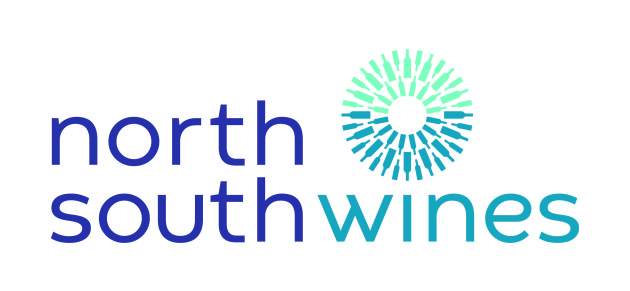
Friday read: Why are non-alcoholic brands so obsessed with…alcohol?
Nazy Farkondeh, senior writer at verbal branding agency Reed Words, on why low & no brands should stop focusing on what they’re not.
Take a look at these taglines: ‘All of the spirit, none of the booze’ (Ghia); ‘Zero Calories. Zero Alcohol. Zero Regret (Monday); ‘All buzz and no booze’ (Cann Social Tonics). None of them contains alcohol, yet they all make it the focal point of their copy.
When we look at the advertising generally associated with alcohol brands, with their images of beautiful people gathered for a night out filled with infectious energy and excitement, this anti-booze messaging starts to make sense. Many non-alcoholic (NA) brands feel the need to address a conditioned fear that you can’t have fun without alcohol. An easy way to do that is to subtly antagonise booze.
But it’s a tactic that’s starting to come across as out of touch. As mainstream sobriety increases (alcohol consumption worldwide has fallen by 5% since 2000, Our World in Data), and as movements like Dry January and Sober October gain momentum, NA brands are in the assent. So surely it’s time they all stopped talking about what they’re collectively not and started developing their own unique verbal identities.
What, no alcohol?
As a brand strategist, writer and someone who’s been sober for some time, I’ve paid close attention to the rise of mainstream sobriety and how NA beverage companies both contribute to and profit from it.
Doubling down on the absence of alcohol as a messaging platform feels like a no-brainer for establishing the most relevant value proposition from the start. But it comes with the risk of blending into a cluttered landscape where every other brand is doing the exact same thing.
Jumping onto a consumer trend is an easy way to get the attention of your audience. But distinctiveness is what makes brands successful for the long haul. For NA beverages, this requires transcending the trend and cultivating an offering that goes beyond being ‘anti-booze’.
Flavours should speak to emotions, not the senses
Talking about flavour doesn’t only mean telling your consumer you’re citrusy, sweet, smoky, bright, robust, etc. It’s about the sensation that occurs upon tasting it; and making sure the experience is ownable.
There are many ways of getting at the tasting experience without using flavour adjectives and aromas. NA spirit brand Seedlip, for example, promises a complex flavour profile by taking the drinker from ‘bud to bloom’, and by ‘harnessing the power of nature and alchemy’. It’s copy that tells a story. We immediately understand Seedlip’s robust use of botanicals is not only part of the product’s key attributes, it is also core to the brand’s philosophy. Its language is both figurative and descriptive. Grown-up and a little mysterious. It’s a perfect example of getting at the essence of the drink without mentioning alcohol.
Don’t make zero-proof your entire brand personality
If we think of brands that hopped on the bandwagon of diet culture, words like ‘zero’ and ‘free’ were quite effective. But if we look at how the culture around dieting has evolved, these messaging strategies are no longer relevant.
As diet culture has faded away, we see more conversations around concepts like intuitive eating – not feeling guilty about consuming the things we enjoy in moderation. As talk around health and dieting has evolved, conversations around drinking will continue to develop as well – and zero-proof is not guaranteed to be future-proof.
Messaging platforms and language constructs that zero in on zero-proof are, once again, proselytising about what alcohol-free beverages have in common. But if you compare alcohol brands Stoli and Grey Goose, neither will message its vodka in the same way even though they offer the same product made with similar ingredients. They belong to completely different consumer profiles. Grey Goose is more elevated, premium and refined. Stoli is more playful, and edgy.
If you’re an NA spirit brand in the zero-proof game, you’re definitely not alone. Make it clear to your consumers that your product is not going to be about intoxication. But do it once, and then get beyond that. Focus on finding your people and making sure your personality shines for them.
Create an appealing vibe
The vibe that alcohol brands sell is congruous with the excitement, allure and joy that surrounds the start of the night before things get messy. Aperol Spritz’s latest tagline ‘Together we joy’ focuses on the experience of being with friends in an Italian piazza. Corona’s ‘Find your beach’ hooks us into holiday mode, wherever we are.
While regular alcohol brands steer clear of messaging around getting intoxicated, NA brands continue to flood the market with messaging around the benefits of not getting intoxicated. But as not drinking becomes more and more normalised, those benefits will no longer be a novelty.
Be specific both literally (about what you are made of) and figuratively (about what you offer) and capitalise on it. Come up with clever, exciting ways to communicate the spirit of the drink – not the spirit of drinking.
As the market continues to expand, the possibilities are limitless. So don’t shy away from creating an infectious vibe around your product. This is how NA brands will get ahead, even after sobriety loses its edge.
Keywords:
- alcoholic
- agency
- low
- senior
- words
- branding
- writer
- farkondeh
- reed
- verbal
- reed words
- agency reed
- branding agency
- senior writer
- verbal branding
- nazy farkondeh senior
- farkondeh senior writer
- agency reed words
- branding agency reed
- verbal branding agency





